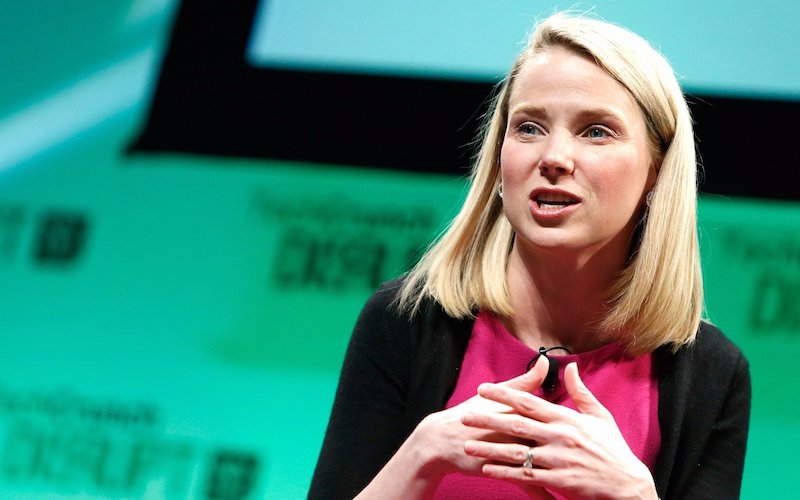Marissa Mayer: Setting Meaningful and Challenging Goals
Episode #5 of the course Productivity hacks: Lessons from top leaders and billionaires by John Robin
Welcome to Day 5 of our course. I hope you’re already putting what we’ve learned into practice. We’re only halfway there, so you’re only staring at half the potential right now!
Today, we’re going to turn to a woman who has shown that if something’s broken, the opportunity to fix it is also an opportunity to shine.
Marissa Mayer has accomplished much in her 43 years. If you use Gmail or Google Maps, you can thank her innovative touch for making those possible. The first female engineer at Google, Marissa excelled so much, she rose to fill the void at a stumbling Yahoo! as CEO. Innovative thinking caused her to see not a struggling company, but an opportunity for growth.
Locke’s Principle: Setting Meaningful and Challenging Goals
The principle Mayer employed is attributed to Dr. Edwin Locke, whose 1968 research showed that the more specific a goal is, the harder people will work to achieve it.
In fact, this has become popularized now as the well-known SMART goals:
S stands for specific: If I say, “become healthy,” that’s not very helpful. “Lose weight” is better because it’s one specific thing I am aiming to accomplish.
M stands for measurable: If I say, “lose weight,” that’s specific but it’s still not helpful. “Lose 100 lbs.” is better, because now I can measure my goal. When I lose 100 lbs., I know I achieved it.
A stands for attainable: If I say, “lose 100 lbs.,” that’s specific and measurable, but it’s still not helpful. “Lose 10 lbs.” is better because that’s much more attainable. I might still want to lose 100 lbs., but in order to do that, I’ll work on losing 10 lbs. at a time. Setting more attainable goals allows me to ensure I’m making progress.
R stands for relevant: If I say, “lose 10 lbs.,” but my weight is 160 lbs. and I want to get stronger, then this goal isn’t helpful. “Improve squats from 180 lbs. to 200 lbs.” is much more relevant because I’m focused on a goal that helps me measure the specific strength gains I want to make (and is aimed at the attainable increase of 20 lbs. in difficulty).
T stands for timely: If I say, “improve squats from 180 lbs. to 200 lbs.,” that’s still not the best it can be. Will that take me a year? Six months? My next workout?
Here’s the best goal—a SMART goal:
“Improve squats from 180 lbs. to 200 lbs. by the end of the month.” What this final condition allows me to do is measure my progress at a specific time—the end of the month—and see how on track I am. At that time, I can modify my goal. If I make it to 185 lbs., then my next goal might be, “Improve squats from 185 lbs. to 190 lbs. by the end of the month.” Here, I’ve learned from measuring my first goal, so my next one can be even more attainable.
Marissa Mayer went into Yahoo! and taught her new team how to be SMART.
She made all employees set SMART goals. She had managers evaluate the employees on progress with these goals, using a bell curve model. She set quarterly performance reviews for all staff, setting her own SMART goals for them. Managers whose employees achieved excellence achieved better success and could, in turn, set SMART goals for how they wanted their employees to improve.
Those who succeeded did so because they had a specific challenge to drive them and a timely sense of how that challenge would be measured to determine their reward incentives.
Despite this, though, Mayer stepped down as CEO in June 2017 after the company announced it had a core worth of less than $0 for several quarters.
But upon her resignation, Mayer announced the achievements of the team:
• $43,000,000,000 in market capitalization
• Tripling Yahoo!’s stock value over the time she’d led the team
• Mobile growth to over 650,000,000 users
• Building a $1,500,000,000 ad business
• Improving company culture
Yahoo! was in deep trouble when Mayer came on board, but she still managed to use her SMART goal strategy to pivot it from a company billions in debt that would have gone bankrupt to one that was doing well enough to be bought by Verizon and whose employees and innovators could go on to continually improve.
Takeaway
What are your top five goals? Try to hone them into SMART goals like in today’s exercise. Now, focus on them, measure your progress, and set new goals each time.
The key to great success comes with achieving small, attainable results realistically and focusing on what’s in front of you. Driven by your inner purpose and putting this first, you’re capable of amazing things!
But hold on!
Where do you draw the line when deciding how much to work, now that you know how to channel your potential? That will be tomorrow’s topic. Stay tuned!
Recommended reading
Edwin Locke’s original 1968 article on his Goal Setting Theory
Share with friends

